Travel Guide to Philippines:
Best Places to Visit, What to Eat & Where to Stay
The Philippines, an archipelago of over 7,000 islands, is a tropical paradise that offers a rich blend of stunning landscapes, vibrant cultures, and mouthwatering cuisine. Whether you're a first-time visitor or returning to explore more, this comprehensive guide will help you navigate the best places to visit, what to eat, and where to stay, ensuring your trip to the Philippines is unforgettable.
Quick Overview for First-Time Visitors in the Philippines
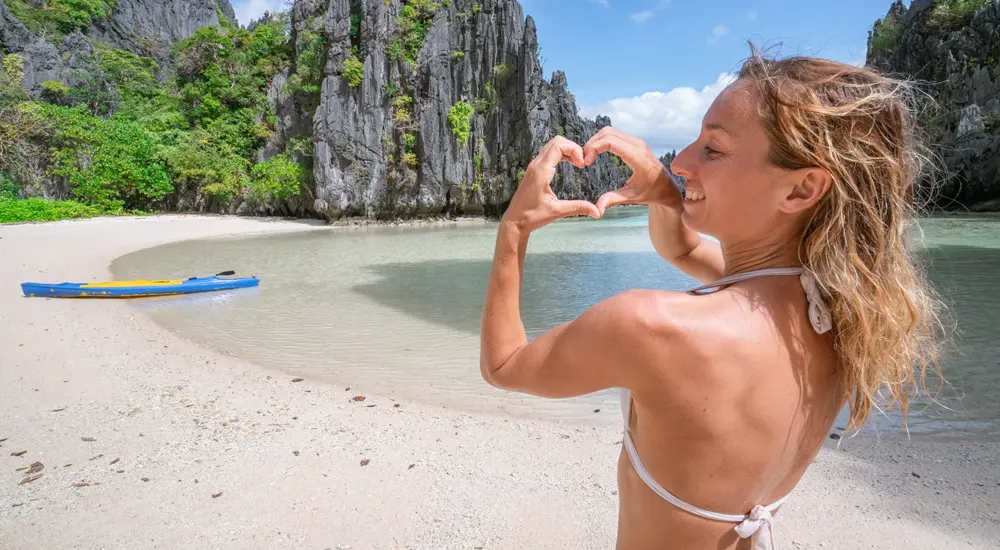
- Weather: The best time to visit the Philippines is during the dry season, from November to April when the weather is generally sunny and pleasant.
- Transportation: While domestic flights are the quickest way to travel between islands, ferries and buses are also available for those looking to explore at a slower pace.
- Language: English is widely spoken, so communication is rarely an issue for tourists.
- Currency: Money: The Philippine Peso (PHP) is the currency used locally. In most cities, credit cards are accepted; however, it is advisable to have cash on hand, particularly when visiting distant places.
Things to Know Before Traveling to the Philippines
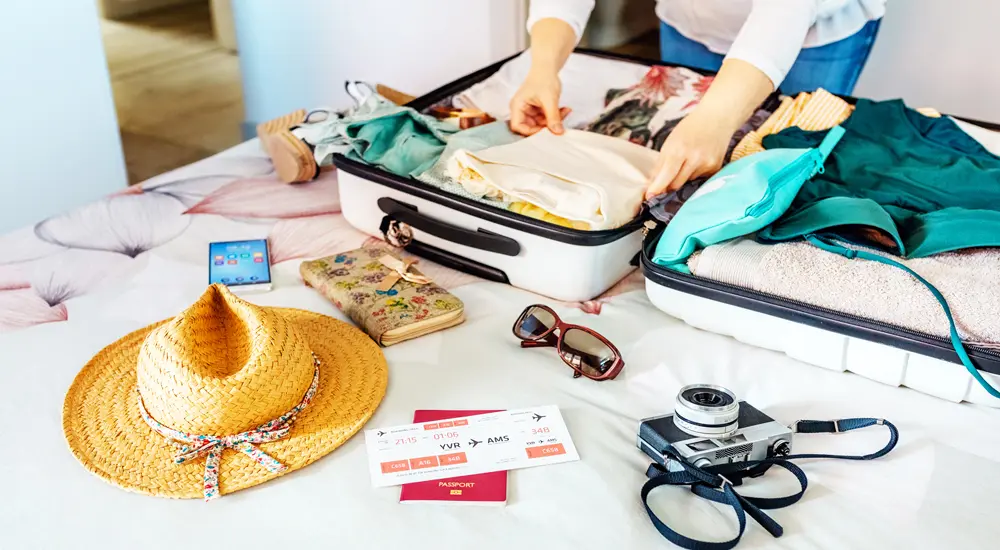
Travelling to the Philippines can be an incredible experience, filled with breathtaking landscapes, rich culture, and warm hospitality. However, like any international destination, it's essential to be well-prepared. Here's a detailed guide on what you need to know before embarking on your journey to the Philippines.
1. Visa Requirements
- Tourist Visa: Most nationalities, including citizens from the United States, European Union, Canada, Australia, and many others, can enter the Philippines visa-free for up to 30 days. If you intend to stay longer, you can apply online or at the Bureau of Immigration for a visa extension.
- Visa on Arrival: Some travellers from non-visa-exempt countries may need to apply for a visa on arrival. It's best to check the latest visa policies from the Philippine Department of Foreign Affairs or consult your local embassy.
- Visa Extensions: If you wish to stay beyond the 30-day limit, you can extend your visa for an additional 29 days, and further extensions are possible. The process is straightforward and can be done at immigration offices throughout the country.
2. Language
- Official Languages: English and Filipino, which is based on Tagalog, are the two official languages of the Philippines. English is widely spoken and understood, especially in urban areas, making it easy for tourists to communicate.
- Regional Languages: There are more than 170 languages and dialects spoken in the Philippines. While Filipino is understood nationwide, you might hear other languages like Cebuano, Ilocano, and Hiligaynon, depending on the region.
3. Transportation
- Domestic Flights: The most efficient way to travel between islands is by domestic flights, with several budget airlines offering regular services. Major hubs include Manila, Cebu, and Davao. Book flights in advance, especially during peak season, to secure the best rates.
- Public Transport: The Philippines' public transport system includes jeepneys, buses, tricycles, and taxis. Jeepneys are the most iconic and affordable way to travel short distances in cities. There are buses and ferries for longer distances. Taxis and ride-hailing apps like Grab are convenient for getting around urban areas.
- Car Rentals: In major cities and airports, rental cars are accessible. However, driving in the Philippines can be challenging due to traffic congestion, especially in Metro Manila. If you're not accustomed to local driving conditions, hiring a car with a driver might be a better option.
4. Health and Safety
- Vaccinations: While no specific vaccinations are required to enter the Philippines, it's recommended to have routine vaccines like measles-mumps-rubella (MMR), diphtheria-tetanus-pertussis, and hepatitis A and B. Consult with your healthcare provider about additional vaccines like typhoid and rabies if you plan to visit rural areas.
- Water Safety: It is best to drink bottled or purified water since tap water in the Philippines is unsafe to drink. Safe drinking water is provided by the majority of hotels and restaurants. If you are not positive that the water in your drink is pure, do not put ice in it.
- Travel Insurance: Comprehensive travel insurance is highly recommended. Make sure it includes coverage for theft, medical emergencies, and trip delays. Health care in the Philippines varies widely; while major cities have good hospitals, remote areas may have limited medical facilities.
- Safety Tips: The Philippines is generally safe for tourists, but like any destination, it's essential to be aware of your surroundings. Petty crimes like pickpocketing can happen in busy places, so be careful with your possessions. In more rural or less-touristed areas, it's wise to travel with a guide or in a group.
5. Connectivity
- Internet Access: In urban settings, Wi-Fi is commonly accessible in hotels, cafes, and restaurants. However, connections may be slower in remote areas. If you need reliable internet, consider purchasing a local SIM card with data from providers like Globe or Smart.
- SIM Cards: Local SIM cards can be found widely and affordably at convenience stores, airports, and shopping centres. Make sure you have unlocked your phone before buying a SIM card. You can choose from various prepaid plans that include calls, texts, and data.
6. Local Time and Electricity
- Time Zone: Philippine Standard Time (PST), or GMT+8, is used in the Philippines for operations. There's no daylight saving time, so the time remains consistent throughout the year.
- Electricity: The frequency is 60 Hz and the standard voltage is 220 V. The most common plug types are Type A (two flat prongs) and Type C (two round prongs). It's advisable to bring a universal adapter if your devices use different plugs.
By keeping these tips in mind, you'll be well-prepared to enjoy the beauty and culture of the Philippines while navigating any potential challenges. Safe travels, and enjoy your adventure in this stunning archipelago!
Read Also: Things to Do in Philippines
5 Best Places to Visit in the Philippines
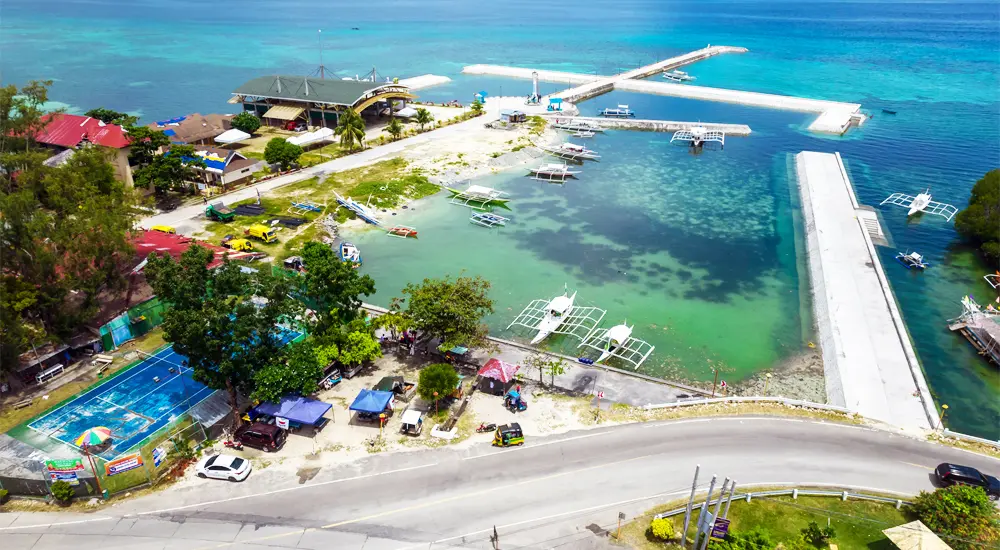
1. Palawan
A popular destination, Palawan is often referred to as the "Last Frontier" of the Philippines. Home to the world-famous Puerto Princesa Underground River and the crystal-clear waters of El Nido, this island offers a mix of adventure and relaxation. Don't miss the chance to island-hop in Coron, where you can explore hidden lagoons and vibrant coral reefs.
Things to Do in Palawan:
- Take a tour of one of the New 7 Wonders of Nature, the Puerto Princesa Underground River.
- Island-hop around El Nido's Bacuit Archipelago to see stunning lagoons, hidden beaches, and towering limestone cliffs.
- Visit Coron to snorkel or dive in the crystal-clear waters of Kayangan Lake and explore the WWII Japanese shipwrecks.
Best Time to Visit:
- November to May, during the dry season, is the best time to visit Palawan. This period offers the clearest skies and calmest waters, ideal for island hopping and outdoor activities.
Recommended Duration:
- 5 to 7 nights. Allocate 2-3 nights for El Nido, 2 nights for Coron, and 1-2 nights for Puerto Princesa.
2. Boracay
If you're looking for pristine white-sand beaches and vibrant nightlife, Boracay is the place to be. This small island has gained international fame for its powdery shores and turquoise waters. Whether you're into water sports, beach parties, or simply lounging under the sun, Boracay has something for everyone.
Things to Do:
- Relax on White Beach, which is renowned for its crystal-clear waters and fine white sand.
- Engage in water sports like kite surfing at Bulabog Beach or go parasailing for a bird's-eye view of the island.
- Enjoy Boracay's vibrant nightlife with beachside bars, fire dancers, and live music.
Best Time to Visit:
- The ideal time to visit Boracay is from November to April, when the weather is dry, and the beach conditions are perfect for swimming and water sports.
Recommended Duration:
- 3 to 5 nights. This duration allows you to enjoy the beach, explore nearby islands on day trips, and experience the island's nightlife.
3. Cebu
Cebu is the perfect destination for travellers who want a mix of culture and nature. Visit the historical Magellan's Cross in Cebu City, dive with whale sharks in Oslob, and take a dip in the stunning Kawasan Falls. Cebu's rich history and natural beauty make it a top pick for many visitors.
Things to Do:
- Visit the historic Magellan's Cross and Basilica del Santo Niño in Cebu City.
- Swim with the whale sharks in Oslob and discover the stunning Tumalog Falls nearby.
- Trek to Kawasan Falls in Badian for a refreshing dip in its turquoise waters and try canyoneering for an adrenaline rush.
Best Time to Visit:
- Cebu is best visited from December to May. This period offers favorable weather for outdoor activities like whale shark watching and canyoneering.
Recommended Duration:
- 4 to 6 nights. Spend 2-3 nights in Cebu City to explore historical sites and the surrounding areas, then 2-3 nights in Oslob or Moalboal for diving and waterfall adventures.
4. Bohol
Bohol is known for its unique natural wonders, including the Chocolate Hills and the Tarsier Sanctuary. This island also boasts beautiful beaches, such as those on Panglao Island, and offers exciting activities like river cruising on the Loboc River.
Things to Do:
- Marvel at the Chocolate Hills, a geological wonder that turns brown during the dry season.
- Go to the Tarsier Sanctuary to witness the tiniest primates in the world in their native environment.
- Take a Loboc River Cruise, where you can eat traditional Filipino cuisine and listen to live music performed by the locals.
Best Time to Visit:
- The best time to visit Bohol is between November and April, during the dry season, to fully enjoy outdoor activities and beach visits.
Recommended Duration:
- 3 to 5 nights. Dedicate 1-2 nights to exploring the Chocolate Hills and the Tarsier Sanctuary, and 2-3 nights for beach relaxation on Panglao Island.
5. Siargao
For surfing enthusiasts, Siargao is a paradise. Known as the "Surfing Capital of the Philippines," Siargao offers world-class waves, particularly at Cloud 9. But even if you're not into surfing, the island's laid-back vibe, hidden lagoons, and stunning sunsets will capture your heart.
Things to Do:
- Surf the famous waves at Cloud 9, even if you're a beginner, with local instructors available for lessons.
- Take a boat trip to the nearby Sugba Lagoon for paddleboarding and kayaking in emerald-green waters.
- Explore the Magpupungko Rock Pools, a natural wonder revealed during low tide, perfect for swimming and cliff jumping.
Best Time to Visit:
- The ideal time to visit Siargao is from March to October, with September and October offering the best surf conditions. However, if you're not into surfing, March to May provides the calmest waters for island-hopping.
Recommended Duration:
- 4 to 6 nights. Spend 2-3 nights surfing and exploring Siargao's beaches, with 1-2 nights for island-hopping and visiting nearby lagoons and rock pools.
Read Also: Tourist Attractions in Philippines
What to Eat in the Philippines
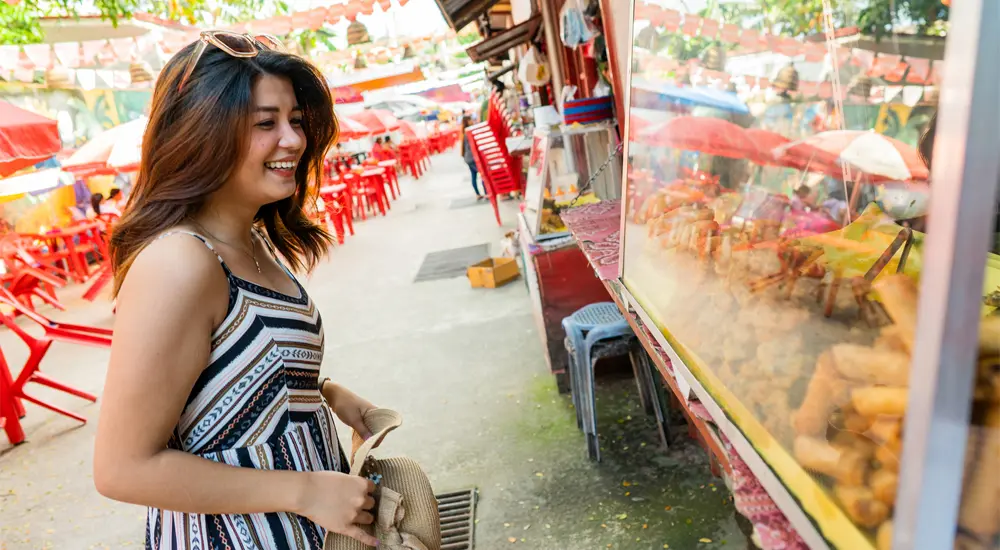
1. Adobo:
Adobo is frequently cited as the Philippine national dish. Every Filipino home must have this flavourful stew made of marinated chicken or pork cooked with vinegar, garlic, and spices. Each region adds its twist, making it a must-try dish wherever you go.
2. Lechon:
The Philippines is renowned for its excellent lechon, or roasted pig. Crispy on the outside and tender on the inside, it's often the centrepiece of Filipino celebrations. Cebu is particularly famous for its lechon, so make sure to try it there.
3. Sinigang:
Sinigang is a sour soup that perfectly balances tangy and savoury flavours. Typically made with pork, shrimp, or fish, and a variety of vegetables, it's a comforting dish that's especially enjoyable during rainy days.
4. Halo-Halo:
No trip to the Philippines is complete without trying halo-halo, a popular dessert made with a mix of shaved ice, sweetened fruits, jellies, and beans, and topped with leche flan or ube (purple yam) ice cream. It is a delightful treat that is ideal for cooling off on a hot day.
5. Balut:
For the adventurous eater, balut is a unique Filipino delicacy that you must try at least once. It's a fertilized duck egg with a partially developed embryo, usually eaten with a pinch of salt and a splash of vinegar. While it might sound intimidating, it's a beloved street food in the Philippines.
Where to Stay in the Philippines
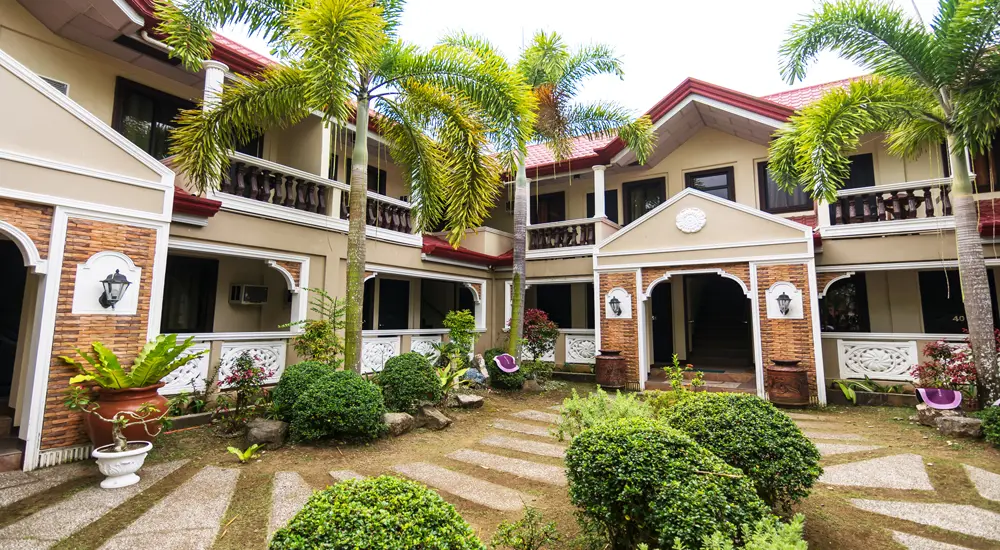
1. Luxury Resorts:
The Philippines is home to numerous luxury resorts that offer world-class amenities and breathtaking views. In Palawan, Amanpulo and El Nido Resorts are top choices for those seeking an exclusive, high-end experience. In Boracay, Shangri-La's Boracay Resort and Spa provides a private sanctuary with stunning beachfront access.
2. Boutique Hotels:
For a more intimate and personalised stay, consider boutique hotels. In Cebu, The Henry Hotel offers a quirky and artistic atmosphere, while in Siargao, the Nay Palad Hideaway provides a serene and eco-friendly retreat.
3. Budget Accommodations:
Travelling on a budget? No problem. The Philippines offers a range of affordable accommodations without compromising comfort. Hostels like Mad Monkey in Boracay and Chillout Hostel in El Nido are popular among backpackers for their friendly vibe and prime locations.
4. Eco-Friendly Lodgings:
Sustainability-minded travellers will appreciate the growing number of eco-friendly lodgings in the Philippines. The Bamboo House in Bohol and the Daluyon Beach and Mountain Resort in Palawan are excellent examples of accommodations that prioritise environmental responsibility.
The Philippines is a destination that promises a blend of natural beauty, cultural richness, and warm hospitality. Whether you're lounging on a beach in Palawan, savouring a plate of adobo in Cebu, or exploring the vibrant streets of Manila, this travel guide to the Philippines will ensure you make the most of your journey. Safe travels!
Read Also: Affordable Trip to Philippines | Philippines vs Thailand